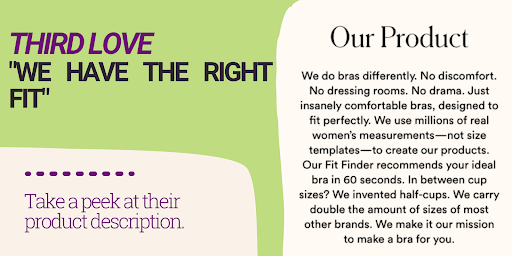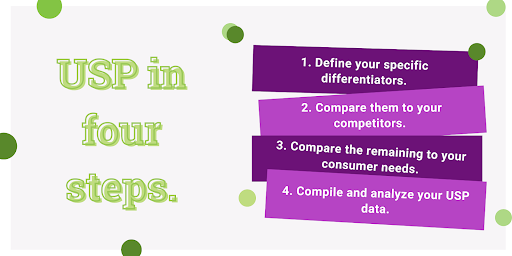What is a Unique Selling Proposition?

Validation Serves a Key Role in the Product Development Lifecycle
August 25, 2021
Are You Asking Bad Questions?
September 8, 2021We all know how important it is to differentiate yourself from the competition in your industry. However, the real question is how to be strategic in your differentiation and ultimately establish yourself as one of a kind. Being unique encompasses multiple facets of business and can be pivotal in your success or failure. Demonstrating that you are different from the competition begins with nailing down your unique selling proposition, more commonly known as USP.
Now, what is a USP? A unique selling proposition is the specific benefit(s) that your product or service provides that your competitors do not. Even more so, it is a unique element that competitors cannot copy or do themselves. It can be something as small as your style of customer service or as big as your ethical production means. A USP is more than just a slogan or a persuasive line of text, it is your entire brand position.

A good USP will play into your strengths and is focused on what your customers value. Being opinionated, assertive, and deliberate while also being defensible will make your USP irresistible. Figuring out what motivates your customers and their buying behavior can also help you understand your ideal customer. Your ideal customer is who you envision to be the perfect person to utilize your product or service. Depending on your business, an ideal customer can look very different than another business down the street. Identifying age group, hobbies, family status, education level, marital status and many other factors can help you paint a picture of your ideal customer. Understanding your ideal customer will ultimately determine your USP and is what makes you different from the competition. Overall, a unique selling proposition boils down to the difference between blending in versus standing out in the highly competitive market.
Examining brands that have an excellent USP is a great way to begin formulating ideas about your own. Third Love is a women’s lingerie company in a billion dollar industry. They did an excellent job of seeking to understand the main issue their typical customers experience and subsequently doubled down on that issue.. Their “we have the right fit” USP tackles the common experience of women struggling to find bras that fit. They cast the industry as the antagonist by emphasizing that they never provide the right fit for a majority of women. This makes consumers feel as though they are seen and heard, which is what a successful USP does.

In a broader light, other ideas for USP configuration are the environmental impact, the longevity of your product, and specification. If you can capitalize on having an earth-friendly product, it is an easy quick win for creating your USP. Longevity, which typically equates to quality, is another element that easily attracts consumers. Avoiding being overly trendy or replaceable makes a purchase feel validated and makes the consumer’s dollar feel more valuable. Getting a product that will stand the test of time not only proves quality in your product but makes your customer feel like they are investing in something worthwhile. Specificity comes down to taking a commonly used phrase or benefit and demonstrating how you are different. For example, rather than saying your new puppy chow is “healthy,” be specific and say it is vegan, gmo free, or vet recommended.
Now that we have a good grasp on what a USP is, we will take a look at steps to developing your own. As we mentioned earlier, differentiation is the key to success. Begin with a list of all the potential unique benefits you can provide, ensure you are being specific, and then analyze your competitors unique benefits. Finally, by cross analyzing your list of differentiators against those of your competitors will help you understand what really sets you apart in the market. With your remaining differentiators, compare them to your audience’s needs and who you believe to be your ideal customer. This will ensure you aren’t trying to capitalize on a point that your target market doesn’t have interest in. Finally compile the data and think about viable ways to apply your USP across your entire business. Be sure it can be applied to your product, branding, marketing, internal structure, persona and more! To simplify, the steps are laid out in four steps below:

Repeating this process multiple times and seeking the perspective of others throughout the process will help weed out flaws in your USP. Testing your USP with friends, family and even strangers within your target market will help you guarantee its success.
Blueprint: While there is not a uniform formula that can create the perfect USP for everyone, the following blueprint can help provide an outline:
[YOUR BRAND] offers [PRODUCT/SERVICE] for
[TARGET MARKET] to [VALUE PROPOSITION].
Unlike [ALTERNATIVE], we [KEY DIFFERENTIATOR].
When filling in the blanks, keep in mind that this is a commonly used outline and following it verbatim may result in your USP sounding generic even if your differentiator is not. Rearranging some of the elements is an easy way to make your USP sound original while still hitting the key points. For example:
Rather than offering [COMPETITOR DIFFERENTIATOR], [YOUR BRAND] provides [PRODUCT/SERVICE] to [TARGET MARKET] while also ensuring [KEY DIFFERENTIATOR] and [VALUE PROPOSITION].
These examples demonstrate that there are multiple ways to structure your unique selling proposition. It is also important to keep in mind that the key points from the examples are simply suggestions. Always feel free to add other points or leave out some points to fit your brand. It is all about demonstrating your unique benefits while staying true to your brand.
Now you are equipped with the concept of a USP and the steps to take in order to develop a successful one. The ball is in your court to brainstorm, test, and develop a unique selling proposition that ensures your product or service is successful! For more information on brand positioning and messaging, join the Founder Community for access to coaching, peer resources, and more!
